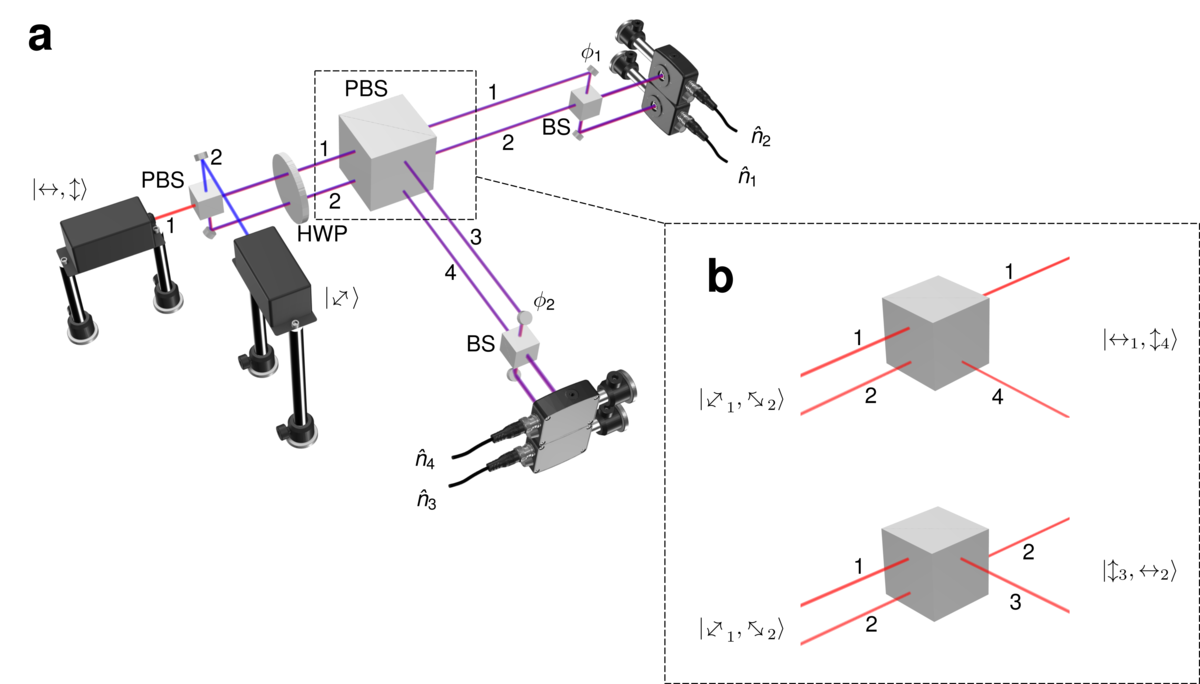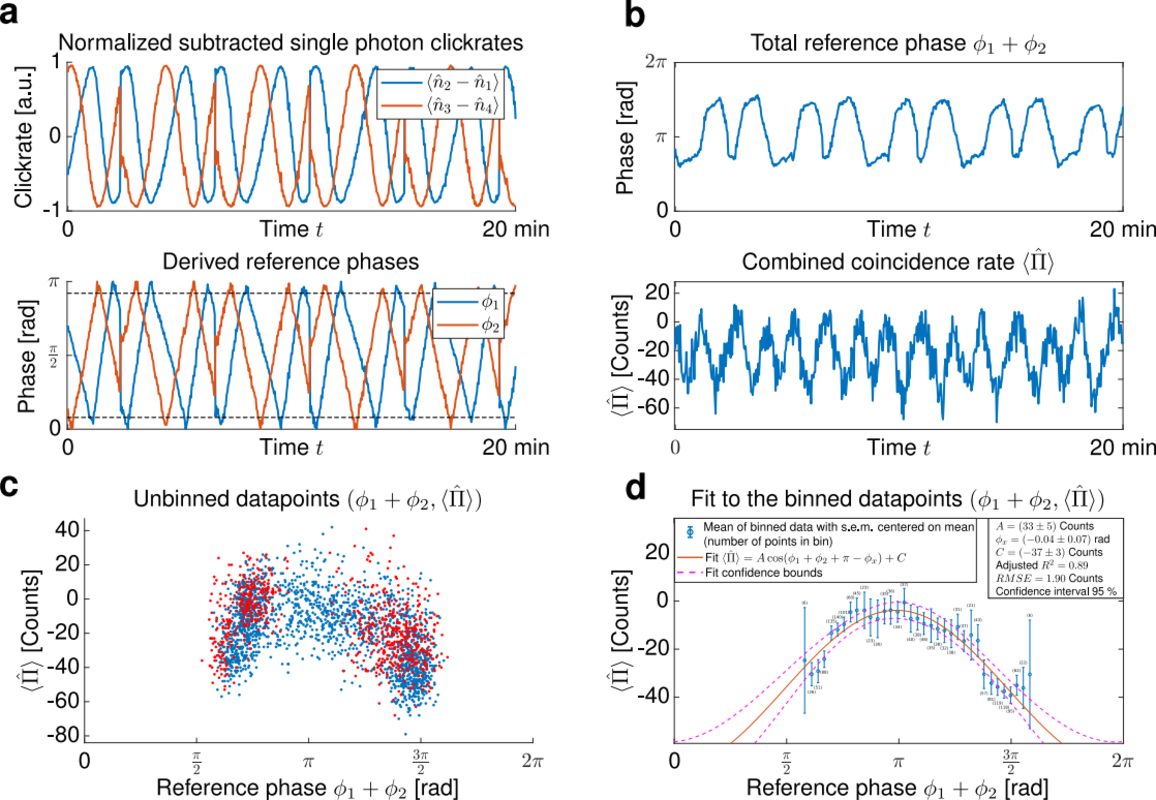This experiment delivers tangible proof of an astonishing quantum phenomenon which can only be observed in identical quantum objects. This represents an important step forward in quantum science.
Photons are the quantum particles responsible for electromagnetic radiation; the very particles weaving the fabric of light. Any two given photons can only be distinguished if they have different wavelengths, oscillate in different directions or are located at different positions in space and time. "If two photons that are indistinguishable in wavelength and oscillation direction meet and separate again, they effectively have lost their identities" explains Kurt Busch. "Imagine we send twins through two doors into the same room. When they step out of the room, we cannot discern whether they have used the same door from which they entered or not", completes Oliver Benson.
The theory of quantum mechanics further teaches us that – according to the symmetrization postulate – two categories of elementary particles must exist: Bosons and Fermions. Members of these two families of particles can be told apart by their behavior under particle-exchange. In the twin metaphor, this corresponds to a situation in which both individuals enter and exit the two-door room by different doors. In the case of Bosons, nothing notable happens upon exchange. Fermions, on the other hand, acquire a so-called exchange phase as the wave function describing them evolves to take on an additional phase shift. "Within the twin analogy, this can be imagined as follows: If we send the twins in lockstep into the room and if they exit through different doors, they are still in lockstep. As Bosons, they step out with the same leg with which they stepped in. However, as Fermions they need to take one additional step so that they step out with the opposite leg", says Benson. "The bosonic nature of Photons could, thus far, only be demonstrated through indirect measurements and mathematical considerations", says Kurt Busch. "In our recent experiment we have measured the particle exchange phase for the first time in a direct manner and have thus provided direct evidence for their bosonic character."
In order to measure the exchange symmetry of a state that involves two identical particles, the team has set up an optical apparatus of the size of a small table. The setup includes a custom-made interferometer and, at the heart of it, two beam splitters. Two photons are sent through the interferometer. Impinging on the first beam splitter, they are guided along two distinct paths; in one of them, the two photons remain unaltered while in the other path they are exchanged. At the exit of the interferometer, the two photons are superimposed through the second beam splitter. "As the case may be, whether the photons are bosonic or fermionic, both photons emerge in lockstep and amplify each other or they are out of lockstep and erase themselves", explain the physicists.
Future improvements of the interferometer will provide a new tool for precision measurements with quantum light. At the same time, the experiment establishes a new method for the generation and certification of quantum states of light. This is of particular importance in the area of quantum information processing, on the basis of which novel and highly efficient computers are currently under development.



